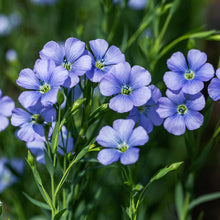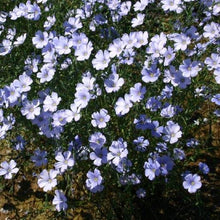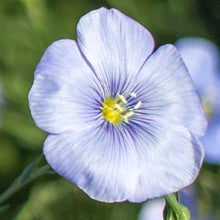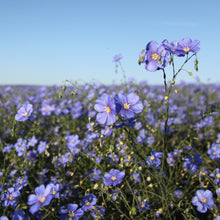Useful for its tiny, bright blue blossoms and heat and drought tolerance, Blue Flax adds charm to a sunny and dry garden. Hardy enough for windy sites and high elevation gardens. This easy to grow perennial does best in sandy or loamy soils. Companion plants include California Poppy and Clarkia species. Deer resistant too!
Available in single packets and as bulk wildflower seeds.
Also see this helpful information:
| Live seeds per ounce (approx 28 grams): | 13,750 |
| Seeding rate per ounce: | 450 sq ft |
| Regions: | All |
| Native To: | Western U.S. |
| Life Cycle: | Perennial |
| Exposure: | Sun |
| Height (in.): | 12-18 |
| Bloom Period: | Spring-Summer |
| Flower Color(s): | Blue |
| Germination Period: | |
| Water Requirements: | Very Low |
| Cultural Information: | Seed at 1/4 inch deep or less in late fall to early spring. |
| Links to additional information and photos: | Stover Seed |








